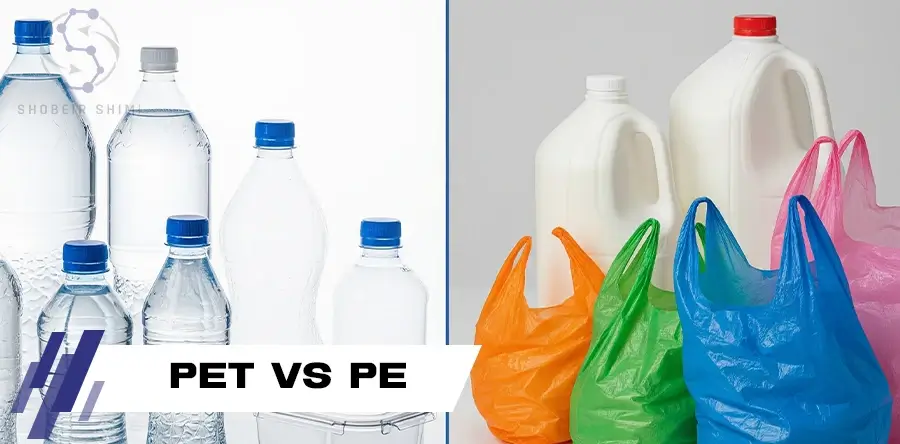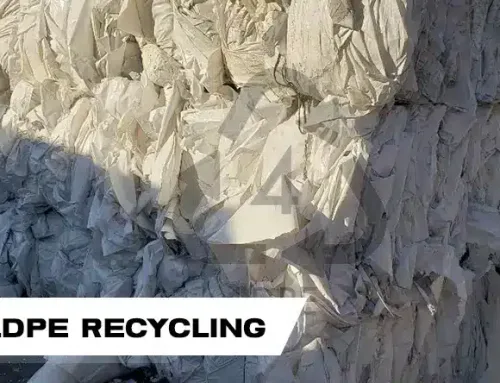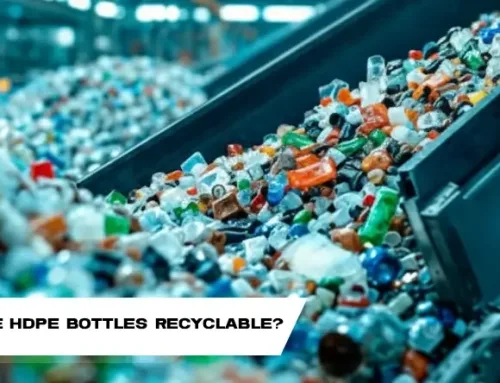One of the crucial decisions packaging engineers, product developers, sourcing professionals, and purchasing agents have to make is to decide which plastic material to use, Polyethylene (PE) or Polyethylene Terephthalate (PET). Both these polymers control the world of packaging, and yet their differences are the cause of debate in food, beverage, medical, and industrial packaging. This article explores PET vs PE to help industry professionals make informed decisions for every application.
Introduction to Polyethylene Terephthalate (PET) and Polyethylene (PE)
To understand details about Polyethylene vs Polyethylene Terephthalate, we should know that the building blocks of the packaging business are Polyethylene and Polyethylene Terephthalate. PET belongs to the polyesters, whereas PE takes the most prominent place in the family of polyolefins. The combination of them constitutes most of the current bottles, films, pouches, and containers. To compare PET and PE plastics, it is essential to know that both products have distinct performance features, cost-efficiency, and benefits.
What Is PET? (Polyethylene Terephthalate)
PET polyethylene terephthalate is an aromatic polyester, chemically different, and structurally strong. It is made up of repeating units of terephthalates whose backbone gives it impressive strength-to-weight ratios. PET is non-reactive, not sensitive to oil and most chemicals and can be thermoformed easily to amorphous (APET) or crystalline (CPET) structures. PET is best suited in rigid containers, clear bottles, and premium trays as it has the following properties. PET has a visual appeal in the form of transparency and gloss, which is very important in the context of retail packaging.
What Is PE? (Polyethylene)
PE polyethylene is regarded as the simplest polyolefin. PE is an ethylene resin that is lightweight and chemically inert. It is versatile and is molded by three major variants:
- HDPE (High-Density Polyethylene): HDPE vs PET is opaque, rigid, and has a high crystallinity, which is ideally used as a durable bottle and container.
- LDPE (Low-Density Polyethylene): LDPE vs PET is flexible and clear, which is used in films, pouches, and soft packaging.
- LLDPE (Linear Low-Density Polyethylene): This is flexible and tough and has puncture resistance in stretch wraps and food packaging.
In these varieties, PE vs PET chemical properties are superior in moisture and flexibility, and ease of chemistry. It is popular with high-volume applications where costs are relevant.
Comparison of Structural and Chemical Properties
When comparing PE vs PET chemical properties, we should identify the essential differences. The polymer backbone of PET provides more rigidity, crystallinity, and thermal resistance, and PE provides linear or branched polyolefin chains to provide flexibility and diversity of HDPE, LDPE, and LLDPE. PET vs PE mechanical properties, including melting (250 °C) have a higher rate than the PE range (105 °C- 137 °C), which influences hot-fill and sterilization. PE usually has an advantage over PET in acid/base and solvent resistance, a crucial aspect for industrial and domestic containers.
Mechanical Characteristics and Strength
PET has tensile strength, rigidity and fracture toughness on mechanical performance. The material can withstand greater loads and crack propagation compared to the majority of PE types. PE, particularly LDPE and LLDPE, is more flexible and impact-resistant than PET, and it is suited to the manufacture of films and packaging that require extensiveness or shock absorption.
Clarity, Transparency, and Aesthetics
Aesthetics is important in the packaging, and PET surpasses all other materials in clarity, gloss, and transparency. PET vs PE clarity and transparency have the advantage of displaying goods as it has a glass-like look, which is preferred in impact and visual display shelves. LDPE is clear, whereas HDPE is milky. The application of PET in drinks bottles and premium retail packs contains the difference.
Barrier Performance Shelf Life
PET vs PE barrier properties are very effective in the exclusion of oxygen and carbon dioxide, which helps to increase the shelf life of carbonated beverages and perishable foods. Its medium aroma barrier also serves as a shield for the product.
PE, particularly HDPE, provides moisture protection (low Water Vapor Transmission Rate), against the humidity and intrusion of water. Nevertheless, PE has a low gas barrier and cannot be used to protect the products against air and carbonation losses.
Commercial Packaging Applications
To compare Polyethylene vs Polyethylene Terephthalate in packaginf application, consider:
Bottles and Containers
PET is preferred in carbonated soft drinks bottles, water, edible oils and cosmetics, where it is important to have transparency and a gas barrier. PE is more prevalent in milk, detergents, and industrial containers in the form of HDPE due to its opaque nature, resistance to chemicals, and low price.
Flexible and Rigid Packaging.
PE (LDPE, LLDPE) also dominates the flex-packs, heavy bags, and flexible pouches when flexibility is a priority. We use PET for high-end product packaging .PET vs PE packaging is used in hard blisters and transparent trays with high-end product packages. PE vs PET for flexible film production has barrier, visual, and mechanical requirements that drive selection.
Substitution and Trade-offs of Materials
Can PE be used instead of PET? PE occasionally replaces PET in multilayer pouches, particularly where the requirements of a gas barrier are less important (such as in food and snacks). However, PET cannot be replaced in carbonated beverages and in other applications that require high transparency. The engineers consider the trade-offs and they apply product sensitivity, cost, and functional needs.
Cost and Market Pricing Dynamics
Both PET and PE are cheap materials; depending on the cost of feedstock, the complexity of processing, and the volume of production. The PE has a competitive edge due to its straightforward chemistry and size. According to the recent trade statistics, HDPE is priced around $1,106/ ton, whereas PET price vs PE cost is around 950/ ton, though prices fluctuate depending on the market and the region. Total part cost, processing temperatures, and cycle times will often give PE the edge on the scale of mass-market parts, but the potential of PET can be used to make a higher investment in high-end products.
Green Supply Chain, Recycling, and Environmental Impact
Which is more eco-friendly: PET or PE? PET and PE are both recyclable, but the former can be collected, sorted more easily, and formed into high-value recycled products (rPET). PE recycling and recycling of films in particular are more complicated and not common. PET containers dominate recycling chains all over the world, and rigid HDPE containers also record moderately during the recycling.
PE vs PET recycling differences can be about the advantage of having a simpler production and degradability in terms of environmental metrics, although in the case of food packaging, PET vs PE environmental impact is less and has a recycling infrastructure that PE lacks. The biggest task that both do is to enhance the rate of recycling and minimize plastic waste in the world.
Summary Table – PET vs PE (Quick Reference)
You can see details about Polyethylene vs Polyethylene Terephthalate in this table:
| Criteria | PET (Polyethylene Terephthalate) | PE (Polyethylene: HDPE/LDPE/LLDPE) |
|---|---|---|
| Chemical Structure | Aromatic polyester | Linear/branched polyolefin |
| Rigidity & Flexibility | Rigid, high strength | HDPE: rigid; LDPE/LLDPE: very flexible |
| Barrier Performance | Excellent gas and aroma barrier | Excellent moisture barrier, poor gas barrier |
| Clarity/Transparency | Highly transparent/glossy | HDPE: opaque; LDPE: flexible, translucent |
| Thermal Resistance | High (melting point ~250°C) | HDPE: ~137°C; LDPE: ~105°C |
| Cost | Moderate, market-driven | Typically lower, varies with grade |
| Best Uses | Bottles (drinks, oils), trays, blisters | Milk jugs, chemical bottles, films, pouches |
| Recyclability | Resin code #1, extensive infrastructure | HDPE: #2, LDPE: #4; more complex for films |
Conclusion
PET and PE are used in packaging, and each can be the best solution in certain aspects: PET has superior characteristics of rigidity, clarity, and gas barrier, which is ideal to use it with beverages bottles and luxury items, whereas PE is more flexible, chemically resistant, and moisture-resistant and can be used in milk jugs or pouches. Contact us for more information.







Leave A Comment